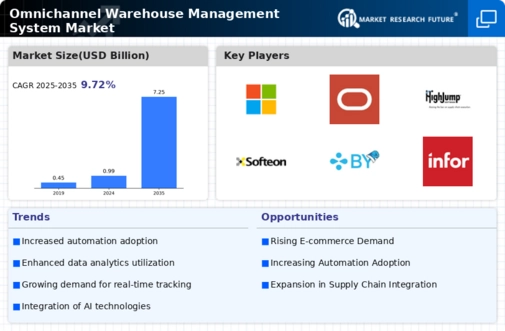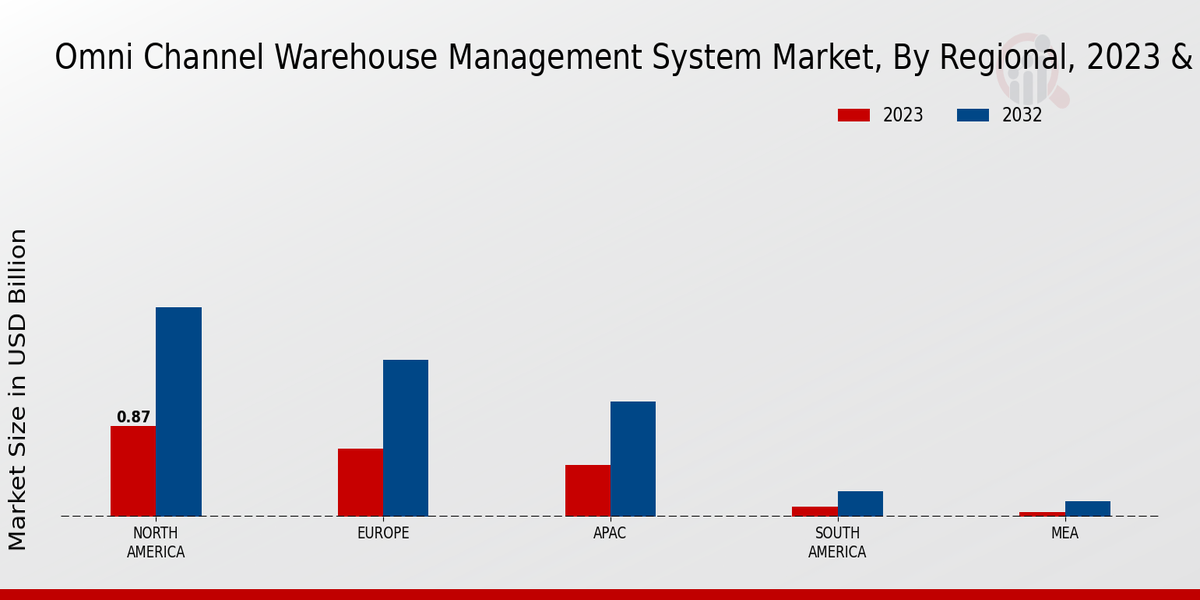Globalization of Trade
The globalization of trade significantly influences the Global Omnichannel Warehouse Management System Market Industry. As businesses expand their reach across borders, the complexity of managing logistics and inventory increases. Omnichannel warehouse management systems provide the necessary tools to navigate these challenges, enabling companies to manage diverse supply chains effectively. This trend is particularly relevant as companies seek to optimize their operations in various regions, ensuring compliance with local regulations and customer preferences. The market's growth is indicative of the need for solutions that can support global operations while maintaining efficiency and responsiveness to local market conditions.
Rising E-commerce Demand
The surge in e-commerce activities globally drives the Global Omnichannel Warehouse Management System Market Industry. As consumers increasingly prefer online shopping, businesses are compelled to enhance their logistics and supply chain capabilities. This shift necessitates the adoption of advanced warehouse management systems that can efficiently handle order fulfillment across multiple channels. In 2024, the market is valued at 0.99 USD Billion, reflecting the growing need for integrated solutions that streamline operations and improve customer satisfaction. Companies that invest in omnichannel strategies are likely to see improved inventory accuracy and reduced operational costs, positioning them favorably in a competitive landscape.
Technological Advancements
Technological innovations play a pivotal role in shaping the Global Omnichannel Warehouse Management System Market Industry. The integration of artificial intelligence, machine learning, and automation technologies enhances operational efficiency and accuracy in warehouse management. These advancements facilitate real-time inventory tracking, predictive analytics, and optimized order processing. As businesses seek to leverage these technologies, the market is projected to grow significantly, with a compound annual growth rate of 19.85% from 2025 to 2035. This growth indicates a strong trend towards adopting sophisticated systems that can adapt to the dynamic demands of omnichannel retailing, ultimately improving service delivery and operational performance.
Increased Focus on Supply Chain Efficiency
The emphasis on supply chain efficiency is a critical driver of the Global Omnichannel Warehouse Management System Market Industry. Organizations are increasingly recognizing the importance of streamlined operations to meet customer expectations and reduce costs. By implementing omnichannel warehouse management systems, businesses can achieve better inventory visibility, faster order fulfillment, and enhanced customer service. This focus on efficiency is expected to propel the market, with projections indicating a rise to 7.25 USD Billion by 2035. Companies that prioritize supply chain optimization are likely to gain a competitive edge, as they can respond more effectively to market fluctuations and consumer demands.
Consumer Expectations for Seamless Experiences
Consumer expectations for seamless shopping experiences are reshaping the Global Omnichannel Warehouse Management System Market Industry. Today's consumers demand consistency across all channels, from online to in-store experiences. This expectation drives retailers to adopt omnichannel strategies that integrate their warehouse operations with customer-facing platforms. By doing so, businesses can ensure that inventory levels are accurately reflected across all channels, reducing the risk of stockouts and enhancing customer satisfaction. As the market evolves, companies that successfully meet these expectations are likely to see increased loyalty and repeat business, further fueling the growth of the omnichannel warehouse management sector.

























Leave a Comment